STEAM Courses

All Courses
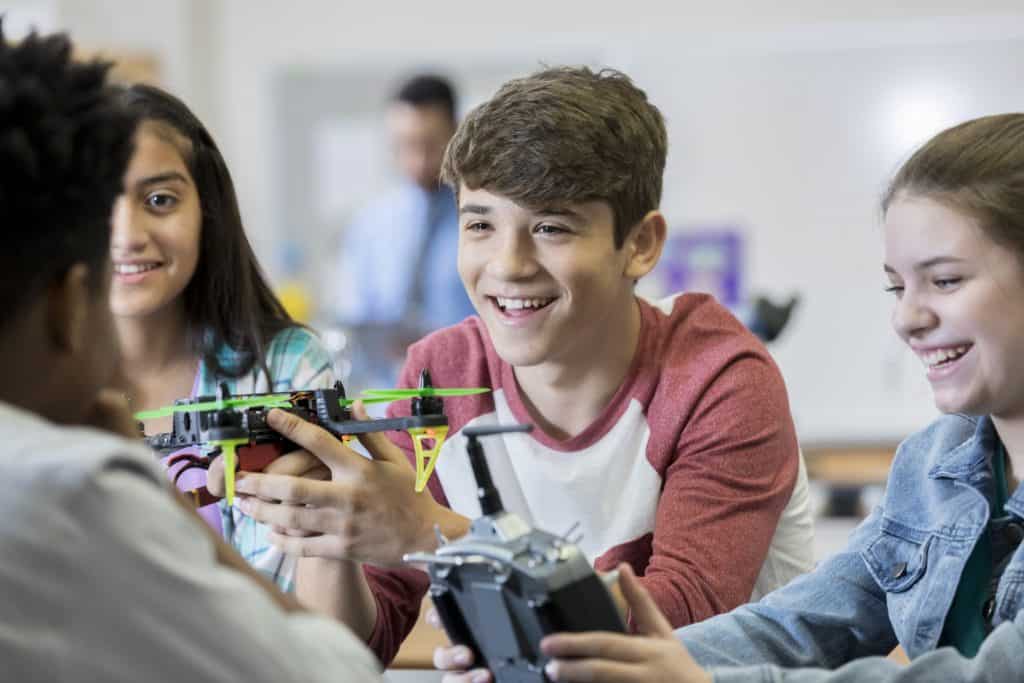
Discovery of Unmanned Aviation (drones)! (Grades 3-5)
Young learners answer the questions “What is the history of Unmanned Aviation?” and “How do they work?” Students learn how to program drone flight through coding in the Droneblocks application.
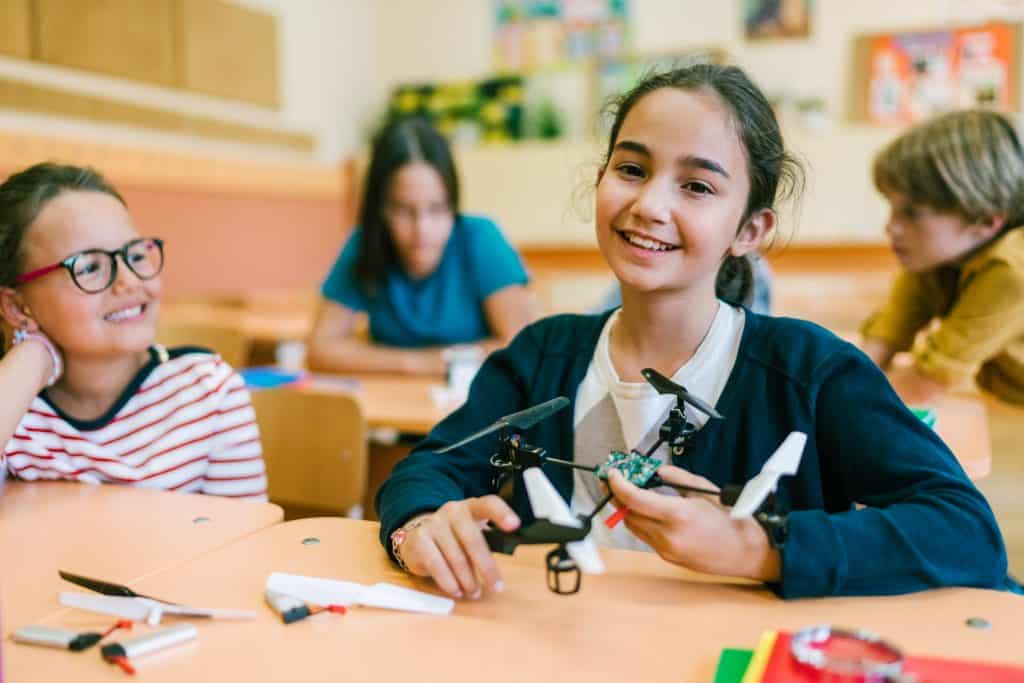
Exploration of Drones: Coding with Tello (Grades 6-8)
Students explore and apply how Unmanned Aerial Vehicles (drones) are used and function. Students will integrate algebraic thinking, programmatic knowledge, and use case scenario abstraction to control drones in Tello.
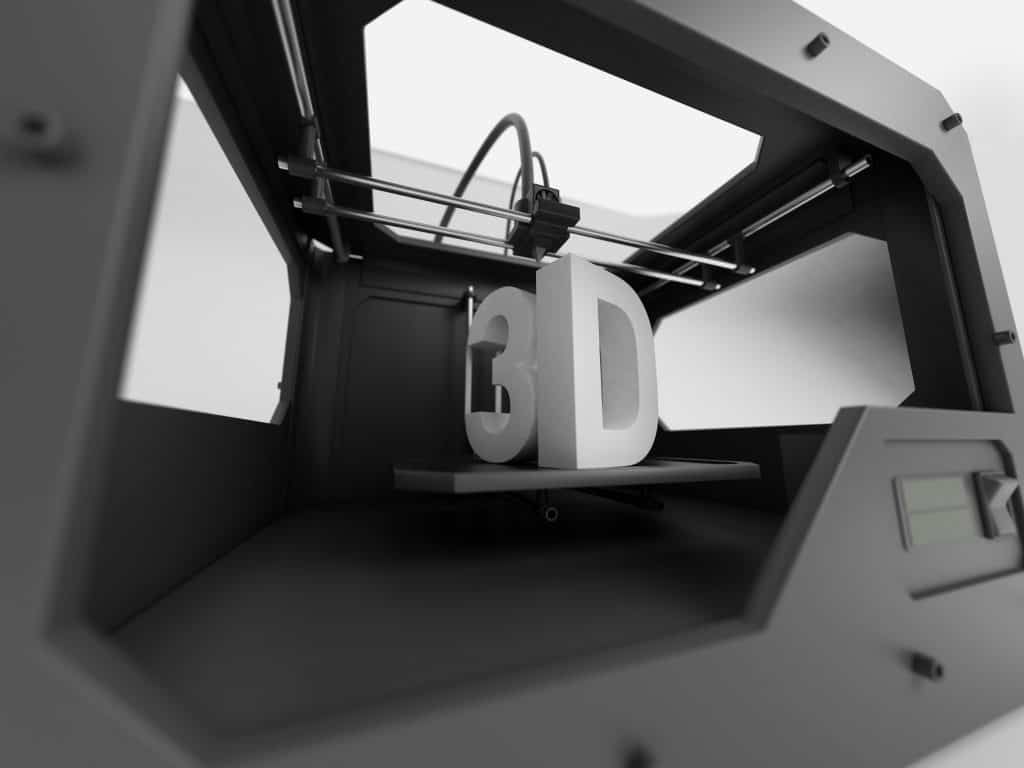
Discovery of 3D Design Using Tinkercad (Grades 3-5)
Young learners answer the question "How does 3D Printing work?” Students will learn how to build and modify designs using concept and design software. Students will translate those designs into code, learning the fundamentals of “slicing”. Through a hands-on approach, students will create tangible products from our in-house 3D printers.

Exploration of 3D Development (Grades 6-8)
Students answer questions such as “What is the Engineering Design process?” and “How can I use it to design in 3D printing for a purpose?” Students will demonstrate proficiency in using 3D Design tools from design to print out.
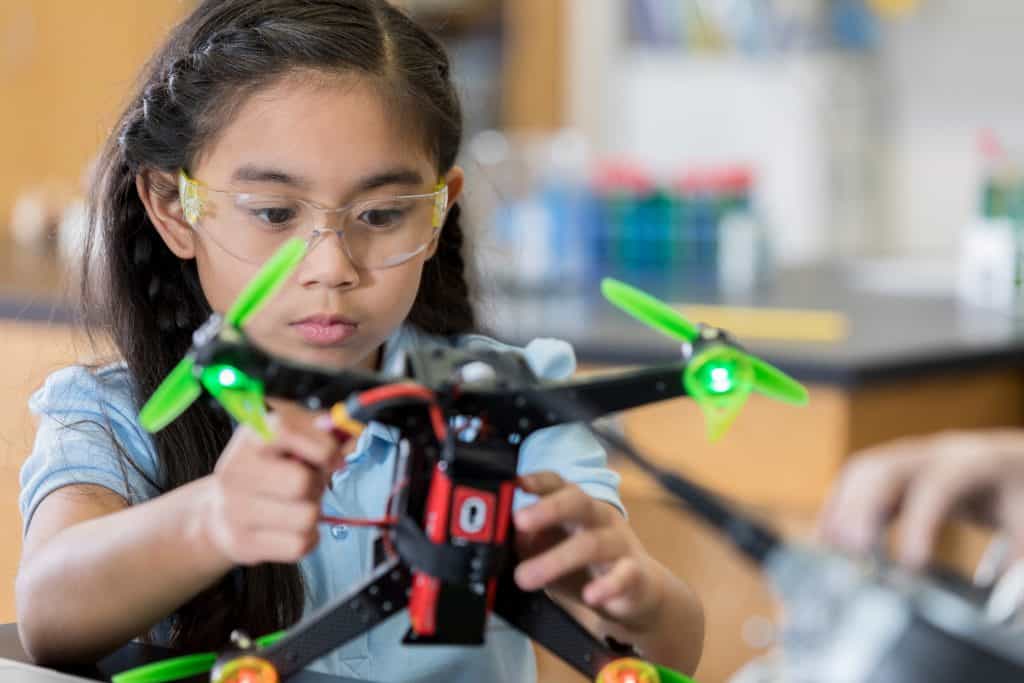
Introduction to Drones: Take Flight! (K-2nd)
Students will be introduced to drones. Students will experience how flight occurs and what is necessary for animals and objects to take flight.
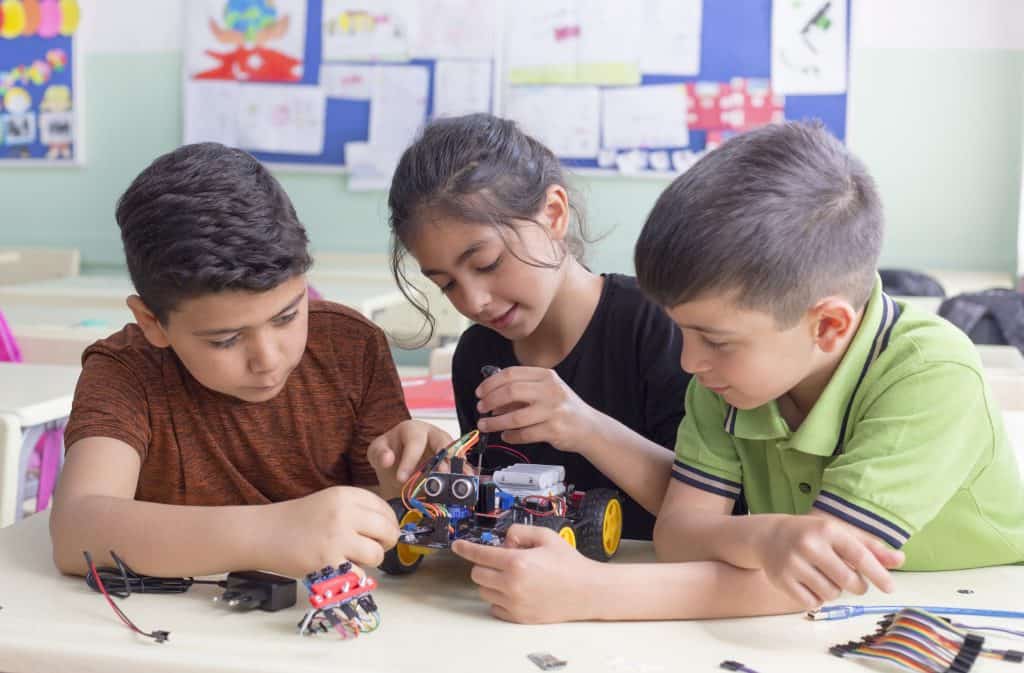
Introduction to Robots: What is a Robot? (Grades K-2)
Early learners answer the questions “What are robots?” “How do they work?” and “What can they do?” Young learners are encouraged to combine creative thinking and intrinsic motivation using cutting-edge technology and Scratch, a free-to-use drag-and-drop creative learning environment developed by MIT Media Lab.
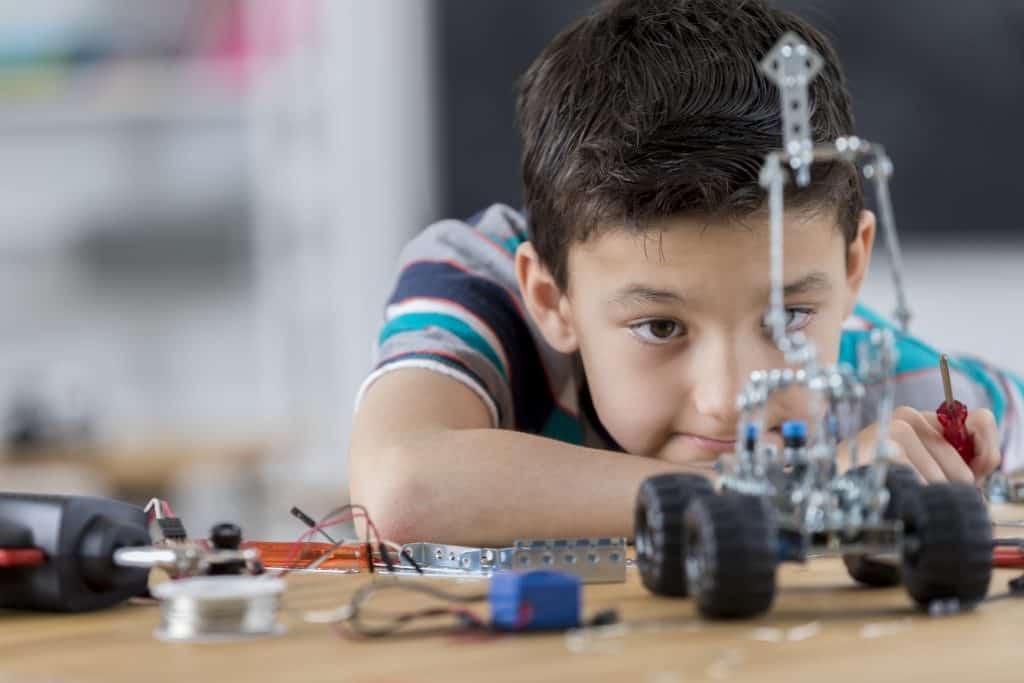
Discovery of Robots: Coding mBot (Grades 3-5)
Welcome to Introduction to Robots! In this course, you and your students will go on an exploration of robotics. Through a series of activities that support inquiry and hands-on learning, students will develop an understanding of how robots function and the purposes for which they are used. Students will have the opportunity to learn how to code in the mBlockly application and program their own mBot robots. The final lessons of the course include a team competition in which students will apply the skills they’ve learned and a debate in which students consider important ethical questions around the use of robots in the modern world.
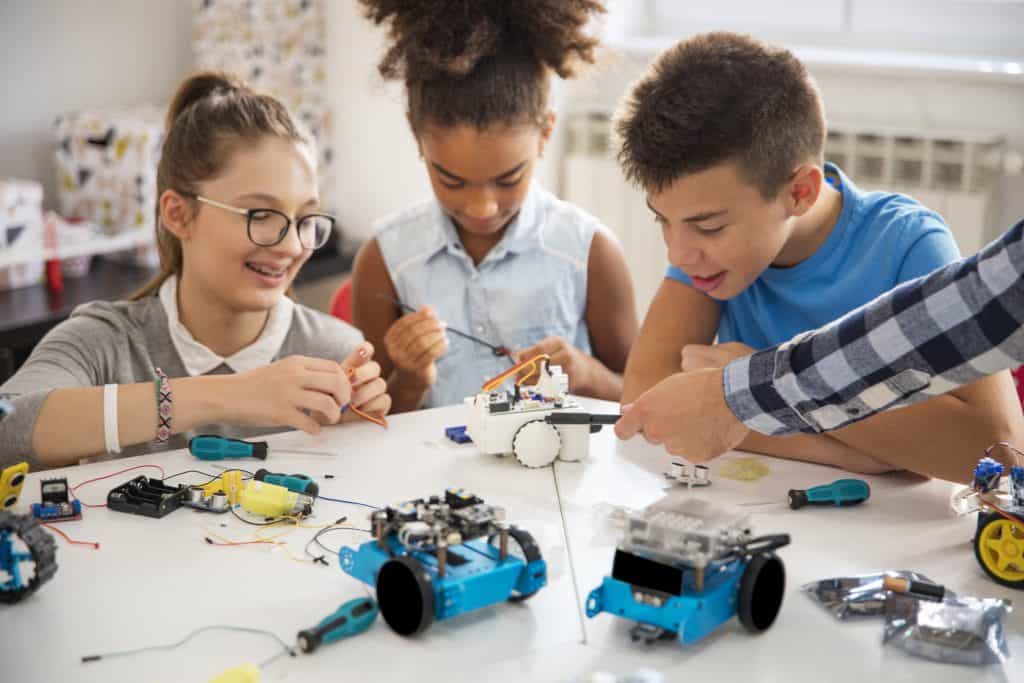
Exploration of Robots: Coding mBot for a Purpose (Grades 6-8)
Students answer questions such as, “What can a robot do?” and “How can a robot be coded to do so?” Students learn to code in the mBlockly application and program their own mBot robots for a specific purpose.
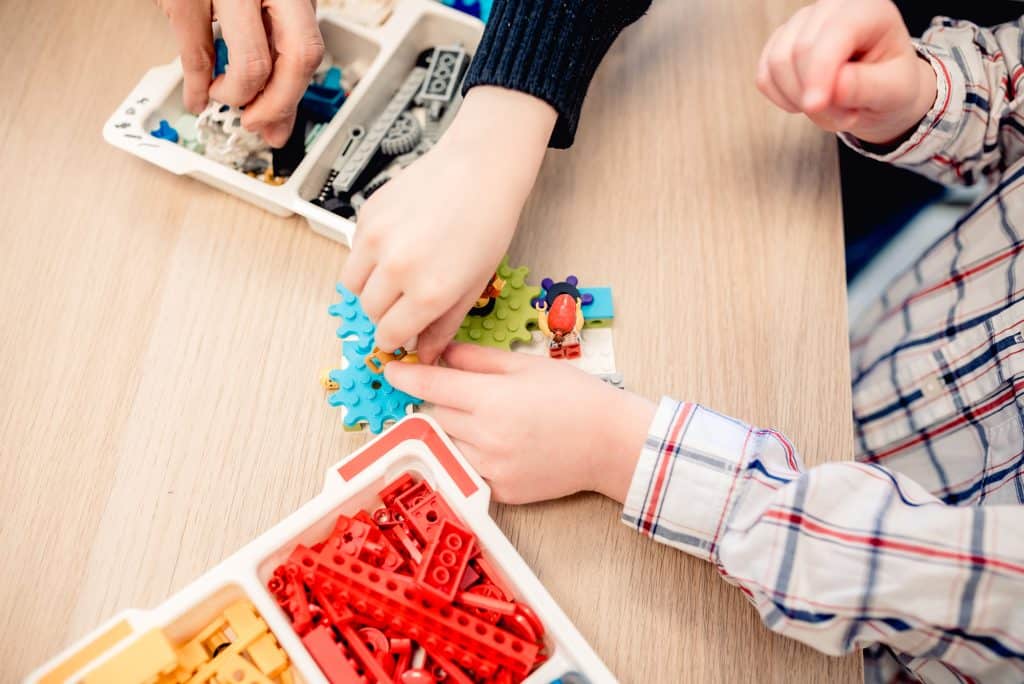
Lego Robotics STEM Programs
Lego Bricks are a child’s gateway to imagination and learning. Click on request a consultation and see if this is the right program for your child!
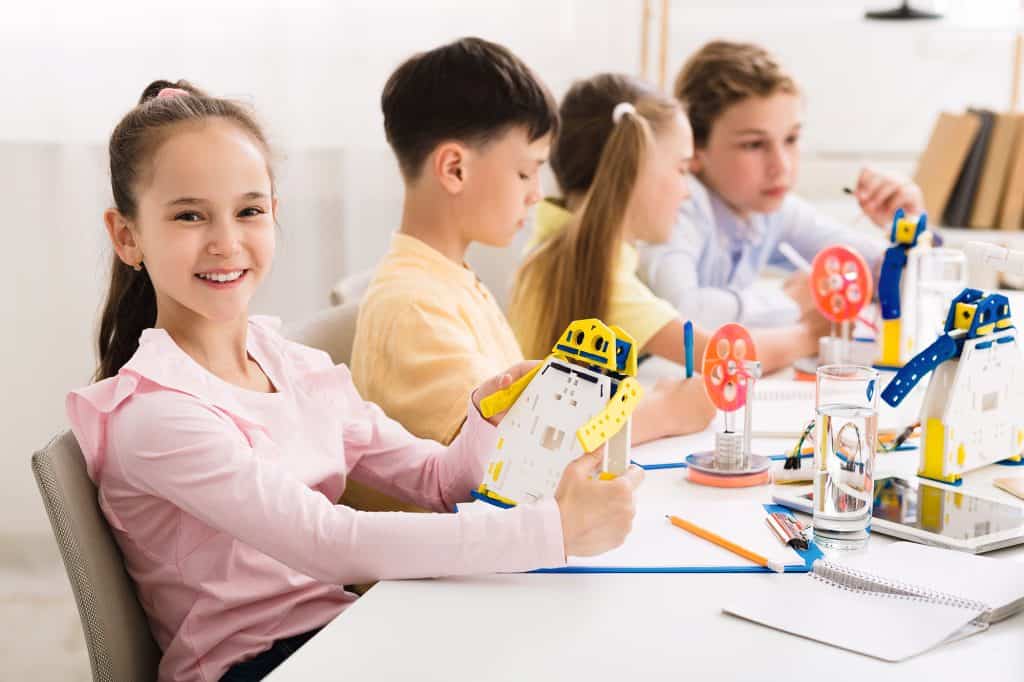
STEAM Saturdays
Our STEAM Saturday classes are designed to engage students with different activities every week that will introduce them to various scientific principles. Classes will include an introduction to Drones and robots which will introduce students to the principles of coding, other classes will include make your own snow and ooblek which will give students the opportunity to learn about chemistry in a hands-on way, and more!
Why Are STEAM Courses Dominating Education?
STEM (Science, Technology, Engineering, and Mathematics) Courses are becoming more and more important in how education in young minds works. It’s based on real-world problems and how to solve them. This translates into molding the minds of children into problem-solvers that learn how to think critically and make logical complex decisions.

Do STEAM classes translate into test results?
In 2011 Microsoft conducted a study on STEM programs and how it has affected students later in life.
The results showed that 78% of Students in college had taken STEM courses in high school or earlier and 21% had said they had taken courses prior to high school.
The responses showed that steam had helped them: Have a passion for Science, Technology, Engineering, Arts, and Mathematics; Study hard; Go to a good college and get a good education.